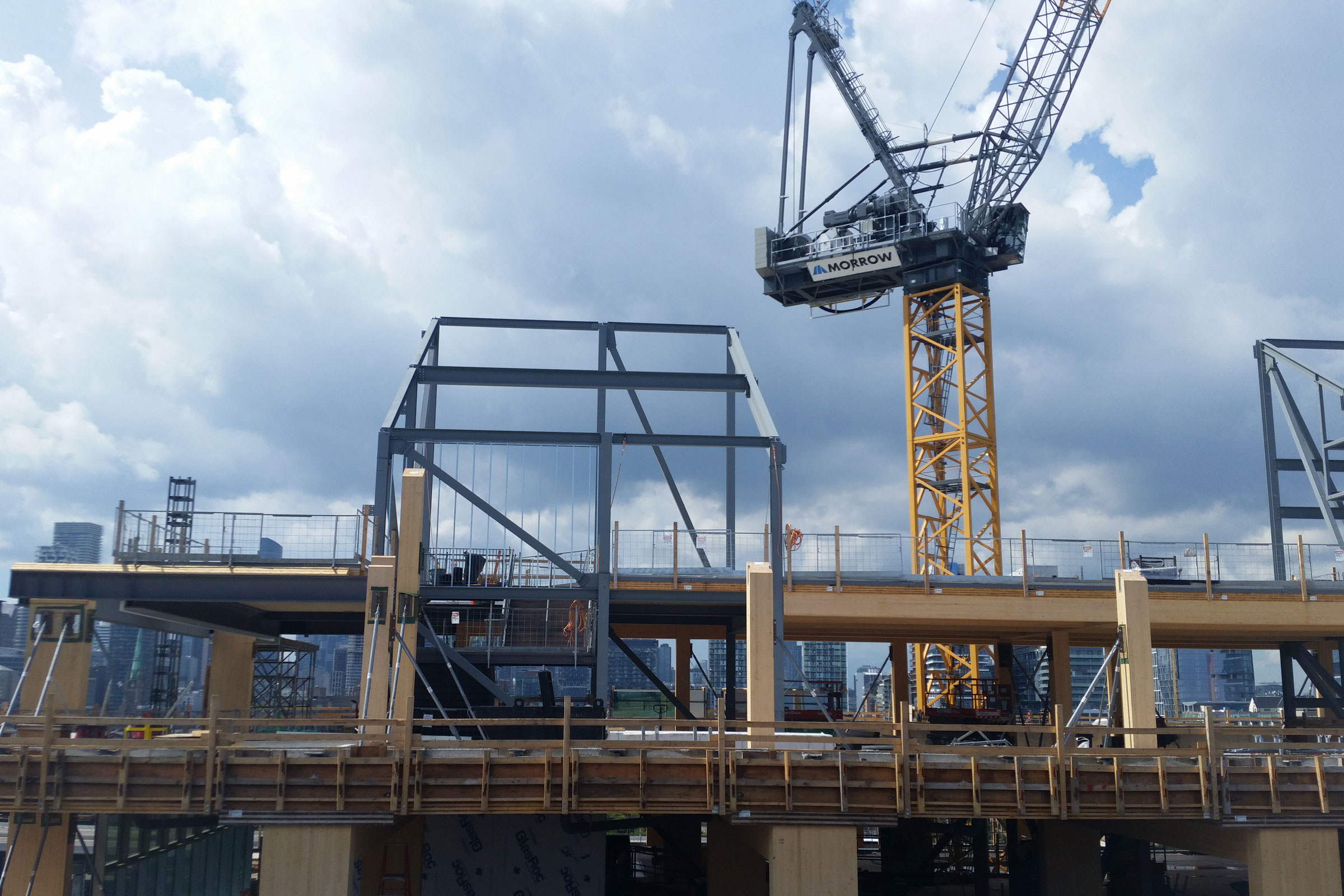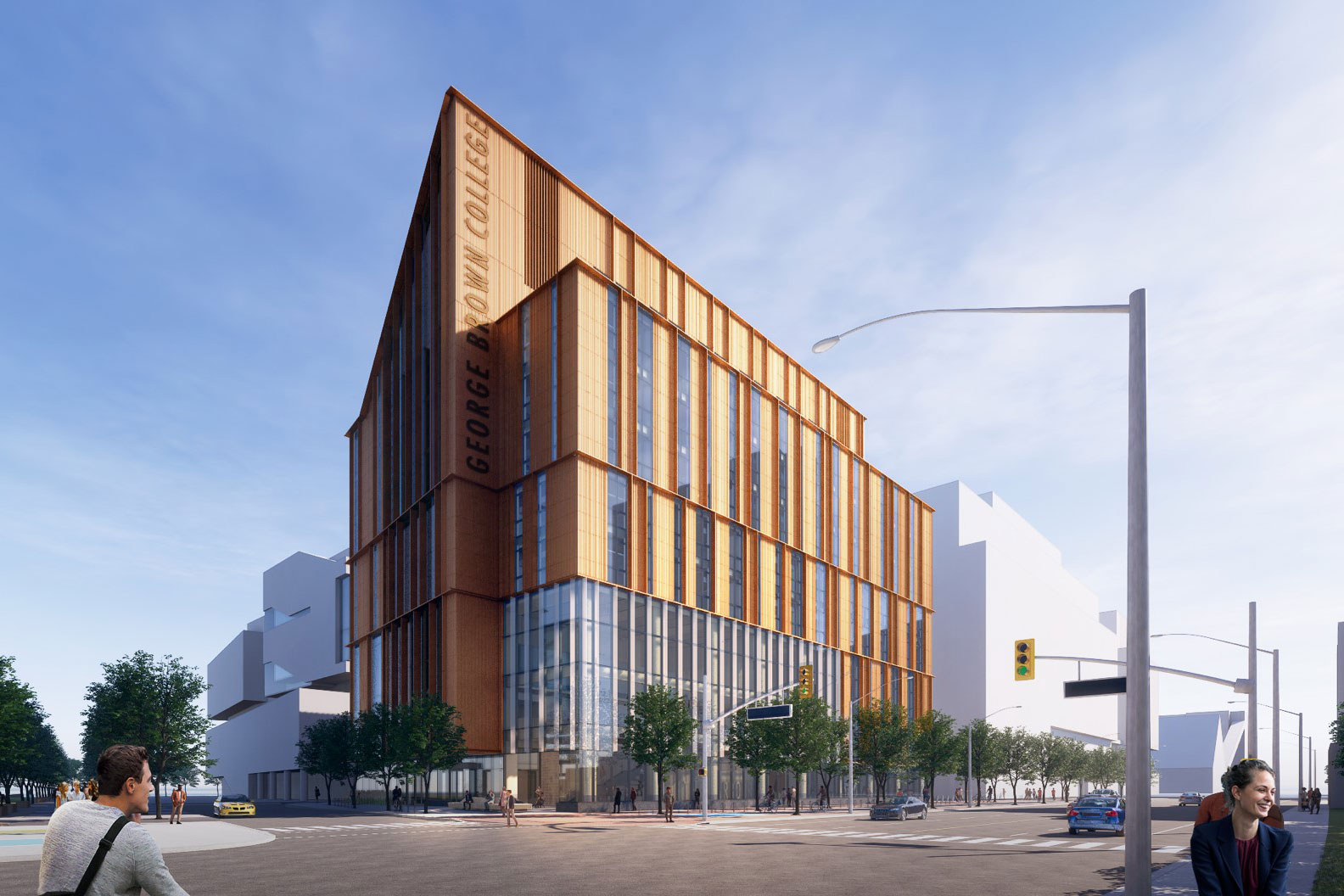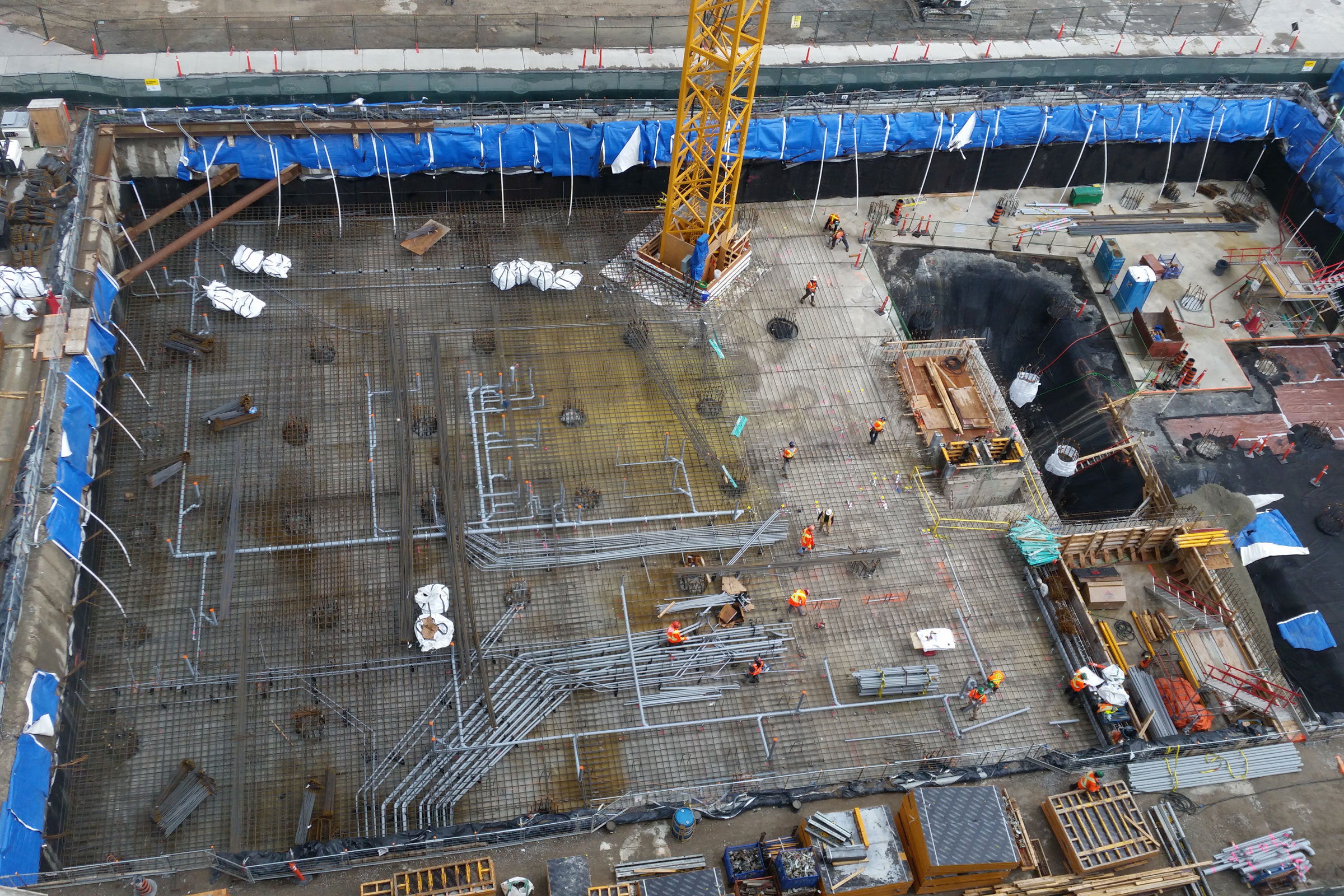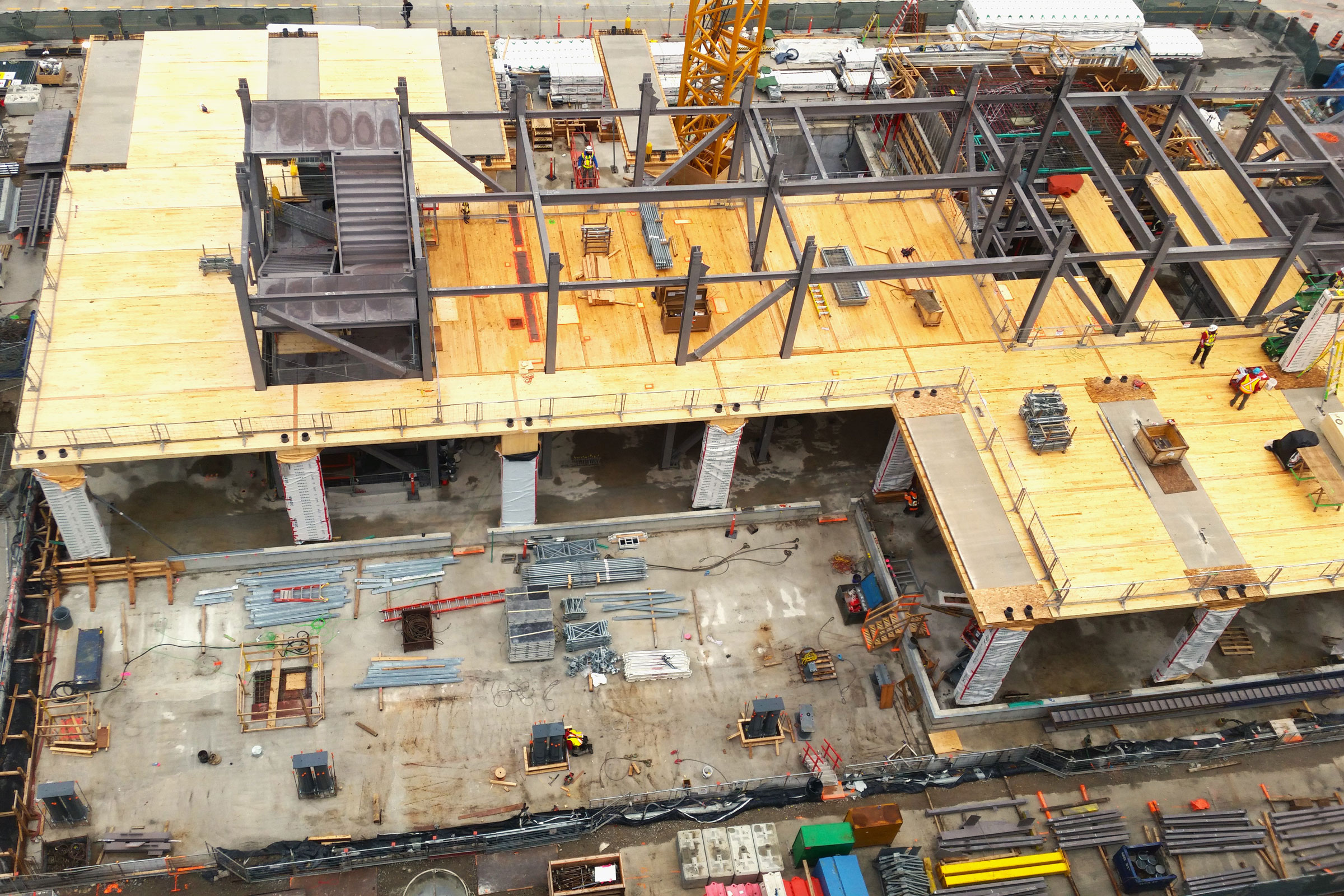Story at a glance:
- Video monitoring in construction reduces waste, improves safety, and increases access to real-time information.
- Sensera Systems’ advanced technologies have a small footprint, powered by solar and enabled by Wi-Fi.
Sustainable buildings are no longer new or surprising, which gives us a lot to celebrate. Since the mid-aughts the USGBC and its LEED program in particular have enabled the building industry to reduce the carbon footprint of the built environment with specific metrics and goals.
But while so much of the focus has been on building materials and performance (i.e., lower carbon-based energy consumption in operation) of every type of building, what gets perhaps less attention are the environmental impacts of construction. These factors count in the LEED, BREEAM, Living Building Challenge, and many other programs, but matters of energy use, materials, waste generation, transportation, water use, and worker safety in the construction process is less frequently part of the discussion.
Perhaps that is because construction is, by definition, a time-limited exercise—one that escapes public attention in part because it is literally out of sight.
But to the team who developed Sensera Systems’ construction monitoring cameras and solutions, the time and activities around construction are center stage. Just as important, Sensera cameras and the cloud-based remote site monitoring are in themselves green in how they operate.
Real-Time Monitoring That’s Important to Stakeholders

Photo taken with Sensera’s camera model MC 88. Photo courtesy of Sensera Systems
There was a time not so long ago when real-time and ongoing observation of the construction process was done exclusively by humans working onsite. Any of the key stakeholders—funders, owners, construction CEOs, project managers, safety engineers, architects, structural engineers, marketers, and others—would need to be on the ground or up on the girders to take in how things were progressing. Over the course of a multi-month or multi-year construction project it would be impossible to know what was happening in meaningful ways on a day-to-day basis. And a lot could go wrong in between visits.
With so many moving pieces and parts, as well as scores of personnel from subcontractors and material deliveries, construction sites have many vulnerabilities. Are working conditions safe? Are materials secured from theft? Are milestones being met, such that delivery of the building will happen as planned? Time is money, after all. And accidents and material losses are, too.
The advent of video monitoring brought some solutions, but earlier technologies required power sources as well as a means for transmitting video back to stakeholders. That might have been easier to accomplish in urban settings but far less so in remote locations. Today, though, things are both simpler and greener.
Powered By the Sun

George Brown College. Rendering courtesy of Moriyama Teshima Architects and Acton Ostry Architects
Sensera Systems brings video monitoring to the next era. With lightweight cameras powered by solar cells, you need no external power source nor wires to run them, and installation can be done by construction crews; specialized skills are not required. Images and data are transmitted via Wi-Fi, negating even the need for Ethernet cable.
“Our US-manufactured systems, which are NDAA-compliant, have a very small footprint,” says Carrie Hunter, vice president of business development for Sensera. “Not only are the cameras small, lightweight, and simple to install onsite, they are designed to run 24 hours a day, seven days a week, 365 days a year without interruption. Our unique, low-powered, patented system allows for our cameras to run on a very small amount of power and omits the need for hundreds of pounds of batteries or oversized solar panels on the site.”
The applications for Sensera Systems’ solar-powered video solutions are not limited to sunny locations either. One example is Limberlost Place, currently under construction at George Brown College in Toronto. The 10-story mass timber structure is built with cross-laminated columns, wood slab bands, and a structural steel core. It will house the college’s school of architectural technology as well as The Brookfield Sustainability Institute. When it opens in 2025 Limberlost Place will meet the highest tier of the Toronto Green Standard for near zero carbon emissions on new private and city-owned developments.
“Limberlost Place is about five years ahead of Toronto’s 2030 goals for sustainable design and performance,” says Nerys Rau, director of design and construction at George Brown College and project director at Limberlost Place. “All the project partners are really driven by what’s possible in advancing sustainability. That commitment has made Limberlost a global model for mass timber construction.”
Use of the Sensera Systems made perfect sense for this hyper-green project. “Limberlost is a future-forward building, and having a sustainable video monitoring partner who has worked with us on many projects makes it easy to do business and continues our mission of green construction in Toronto,” says Mike Love, superintendent of PCL Constructors Canada.
The efficiencies Sensera’s video solutions lend to the construction phase, as well as a solar-only powered camera system, are consistent with all other measures and methods that go into constructing this super sustainable building.
Easy Integration

Photo taken with Sensera’s camera model MC 88. Photo courtesy of Sensera Systems
Sensera’s SiteCloud also integrates with contractor software to provide important data and analysis. Videos of a prefabricated pedestrian bridge being installed at George Brown College, for example, have clear value to anyone wanting to see a project’s progress. But Sensera provides more than moving images, too.
The SiteCloud platform feeds video and data into construction management platforms like Procore. The turnkey solution includes features like analytics and edge recording; automated provisioning and camera management; support to multi-carrier LTE and Wi-Fi; integration of images, video, and sensor data; real-time alerts; OTA (over-the-air) updates; health monitoring; multiple parallel image modes; and a wireless sensor interface.
“SiteCloud is the brains behind the operation—how the data is accessed for all stakeholders,” Hunter says. With access to real-time data, project teams can identify and document adverse events and verify that the project is moving forward on time and correctly.
Ease of installation allows teams to quickly and easily deploy to site and, because no infrastructure is needed, teams can place the cameras exactly where they need them. Given the green goals of buildings like those at George Brown College, Hunter says simplicity backed by renewable solar power makes construction more transparent, less wasteful, and authentically sustainable.

